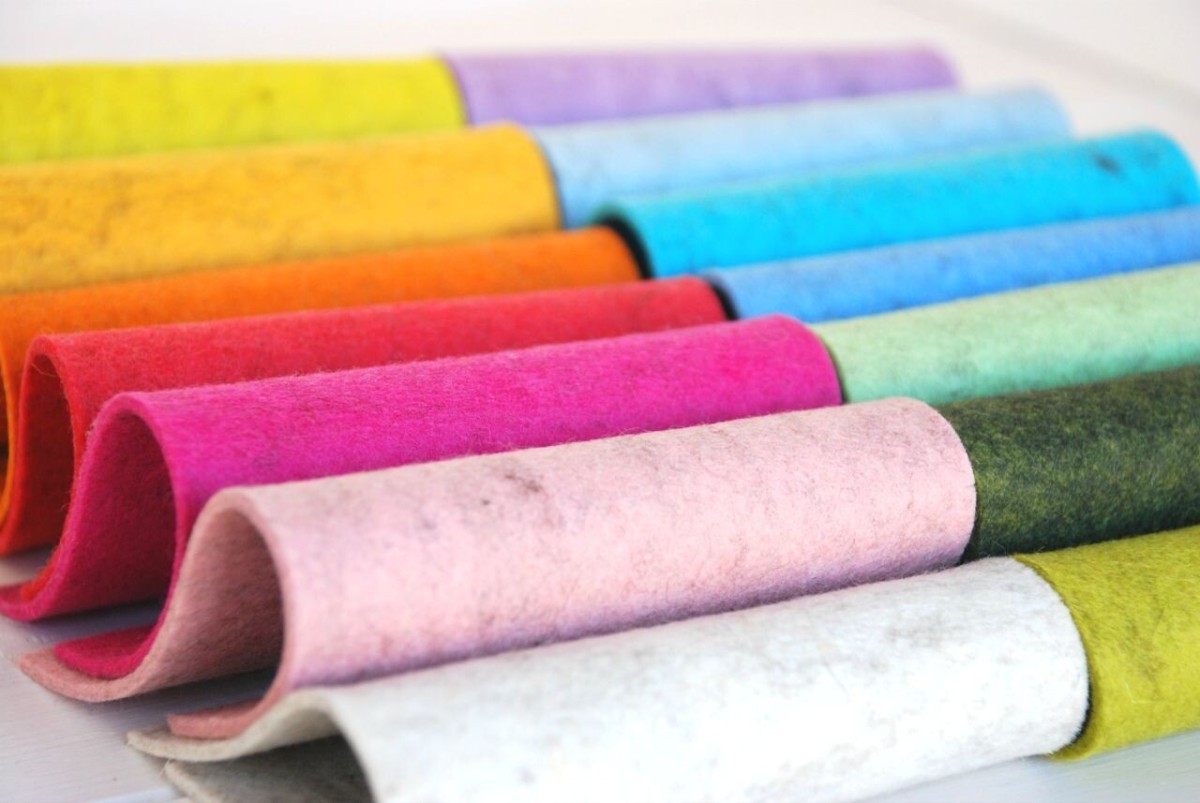
NEWS
### The process of making felt
Felt is a material made of wool or other fibers combined by physical and chemical methods. It is widely used in handicrafts, clothing, home decoration and other fields. The following are the basic steps to make felt:

#### 1. Material preparation
- **Select fiber**: Wool, cashmere, rabbit hair or synthetic fibers are usually used. Wool is the most common choice because it has good elasticity and durability.
- **Washing and combing**: If raw wool is used, it needs to be washed to remove impurities and then combed to make the fibers smooth and separate.
#### 2. Prepare the felt layer
- **Fiber laying**: Spread the combed fibers evenly on a flat surface. You can choose different laying directions as needed to increase the strength of the felt.
- **Wet treatment**: Wet the laid fibers with warm water and a small amount of soap, which helps the fibers to bond with each other. The role of soap is to reduce the surface tension of water, making it easier for water to penetrate into the fibers.
#### 3. Knead and compress
- **Knead**: Gently rub the wet fibers with your hands or tools to promote interlacing and bonding between fibers. This process requires patience and usually takes several minutes to more than ten minutes.
- **Compression**: During the kneading process, you can gently press the fibers to make them more compact. You can use a roller or other tools for stronger compression.
#### 4. Wet and rub again
- **Re-wet**: During the kneading process, you may need to add water and soap several times to keep the fibers moist.
- **Continue to rub**: Continue to rub and compress until the thickness and density of the felt reach the desired effect.
#### 5. Rinse and dry
- **Rinse**: Rinse the kneaded felt with clean water to remove excess soap and impurities. You can rinse with cold water to help the fibers set.
- **Squeeze water**: Gently squeeze the felt to remove excess water, but avoid distorting the shape of the felt.
- **Drying**: Lay the felt flat in a well-ventilated area to dry naturally, avoiding direct sunlight to avoid fading or deformation of the color.
#### 6. Trimming and cutting
- **Trimming the edges**: After drying, the felt may need to be trimmed to ensure that its shape and size meet the requirements.
- **Cutting**: Cut into the required shape and size as needed, which can be used to make various handicrafts or finished products.
### Conclusion
Although the process of making felt seems simple, it requires certain skills and patience. By following the above steps, you can make high-quality felt that can be used in various creative projects. Whether you are a handicraft enthusiast or a professional, mastering this process can add a unique style and texture to your work.
PLEASE GIVE US A MESSAGE
CONTACT US